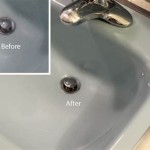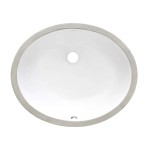Epoxy Paint For Ceramic Sink
Epoxy paint is a type of paint that is made from a resin and a hardener. When these two components are mixed together, they create a chemical reaction that results in a hard, durable finish. Epoxy paint is often used on surfaces that need to be resistant to wear and tear, such as floors, countertops, and sinks.
While epoxy paint is a great option for many surfaces, it is important to note that it is not suitable for all surfaces. Epoxy paint should not be used on surfaces that are made of plastic, as the paint may not adhere properly and could cause the surface to become damaged. Additionally, epoxy paint should not be used on surfaces that are exposed to heat, as the paint may soften and become discolored.
If you are planning to use epoxy paint on a ceramic sink, it is important to follow the manufacturer's instructions carefully. The instructions will likely include information on how to prepare the surface of the sink, how to mix the paint, and how to apply the paint. It is important to follow the instructions carefully to ensure that the paint adheres properly and that the finish is durable.
Once the epoxy paint has been applied, it is important to allow it to dry completely before using the sink. The drying time will vary depending on the manufacturer's instructions, but it is typically around 24 hours. Once the paint has dried, it will be hard and durable and will provide a protective finish for the sink.
Benefits of Using Epoxy Paint on Ceramic Sinks
There are several benefits to using epoxy paint on ceramic sinks. These benefits include:
- Durability: Epoxy paint is a very durable finish that is resistant to wear and tear. This makes it a great option for sinks that are used frequently.
- Water resistance: Epoxy paint is also water resistant, which makes it a good option for sinks that are exposed to water on a regular basis.
- Chemical resistance: Epoxy paint is resistant to most chemicals, which makes it a good option for sinks that are used to clean dishes or other items that may contain chemicals.
- Easy to clean: Epoxy paint is easy to clean, which makes it a good option for sinks that need to be cleaned frequently.
Tips for Using Epoxy Paint on Ceramic Sinks
Here are a few tips for using epoxy paint on ceramic sinks:
- Prepare the surface of the sink: Before applying epoxy paint to the sink, it is important to prepare the surface by cleaning it thoroughly and removing any dirt or debris. The surface should also be sanded lightly to create a smooth surface for the paint to adhere to.
- Mix the paint according to the manufacturer's instructions: The epoxy paint should be mixed according to the manufacturer's instructions. The ratio of resin to hardener will vary depending on the brand of paint, so it is important to follow the instructions carefully.
- Apply the paint in thin coats: The epoxy paint should be applied in thin coats. This will help to prevent the paint from running or sagging. Allow each coat to dry completely before applying the next coat.
- Allow the paint to dry completely before using the sink: Once the epoxy paint has been applied, it is important to allow it to dry completely before using the sink. The drying time will vary depending on the manufacturer's instructions, but it is typically around 24 hours.

How To Paint A Sink It All Started With

Homax Tough As Tile 28 Oz White Tub Sink And Epoxy 3158 The Home

How To Paint A Sink Diy Bathroom Project Your Budget Will Love

How To Paint A Ceramic Tub Or Sink Anderson Lumber

How To Paint A Sink Diy Bathroom Project Your Budget Will Love

How To Paint A Sink It All Started With

Homax Tough As Tile 28 Oz White Tub Sink And Epoxy 3158 The Home

Paint Bathroom Vanity Countertop Sink So Easy A Piece Of Rainbow

Homax Tough As Tile 28 Oz White Tub Sink And Epoxy 3158 The Home

Paint Your Bathroom Sink Hometalk







